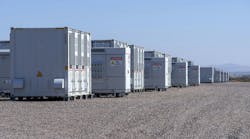A keynote expert panel at American Public Power Association’s November 2016 Customer Connections Conference in Nashville, Tennessee, focused on the question: How do public power utilities adapt to changing customer expectations and new technologies?
A review of the panel’s four experts provides good perspective on a range of experiences in public power.
Panelist Julia Lundin, senior project manager at Oracle (formerly Opower) discussed how her company has seen a significant shift in terms of utility customer priorities. According to OPower, only 55% of the customer perception of value is driven by affordability and reliability. The biggest single indicator of value is customer service.
The average utility customer places much importance on understanding how their bill is calculated and the services they receive, rather than on the price tag alone. Therefore, London said, providing personalized and easily accessible information to customers should be a priority for public power utilities.
Steve Collier, vice president of business development at Milsoft Utility Solutions, reiterated the need for utilities to adapt to customer expectations. Utilities can no longer rely on just wired communications and billing to effectively engage with their customers. Instead, utilities must take advantage of evolving technologies — including social media — to ensure that customers receive the same quality experience from their utility as they expect and get from popular services like Netflix, Uber, and Amazon.
Collier also identified renewables and energy efficiency as a particularly important area of improvement for utilities. Customers see renewables and similar technologies as appealing not only because of their newness, but also in part because of their convenience. Utilities need to ensure that all services maximize convenience to customers, and simplify their daily lives.
Teresa Broyles-Aplin, Executive VP and CFO of Nashville Electric Service, discussed how her utility is taking steps to meet changing customer expectations. In the past year, NES not only updated their website and mobile app, but also recognized the need to expand customer access to multiple physical locations around Nashville. Innovation doesn’t always need to be high tech – it just requires adapting to what customers expect from your utility.
Currently, the electric utility industry sits in the bottom quartile of the JD Power customer satisfaction survey rankings — below healthcare, insurance, and even airlines! Traditionally, utilities focus on big replacements, upgrades, and changes to their technologies and practices. However, with the escalating pace of innovative growth, Julia London argued that utilities have to overhaul how they adapt. Instead of overhauling a website or a publication every five years, she argued, changes and improvements have to happen on a rolling basis, to align with what customers expect from all their service providers.
Harold DePriest, the now retired President and CEO of EPB in Chattanooga, Tennessee, added that his utility saw a dramatic shift in its overall success when it began to focus on building trust and respect with customers. DePriest emphasized the importance of listening to what customers want, rather than implementing communications and customer service strategies based on internal assumptions.


